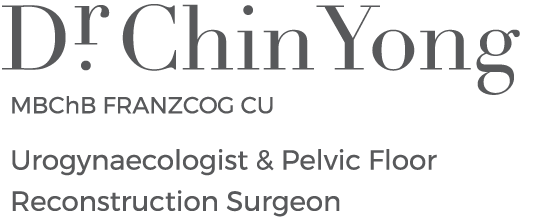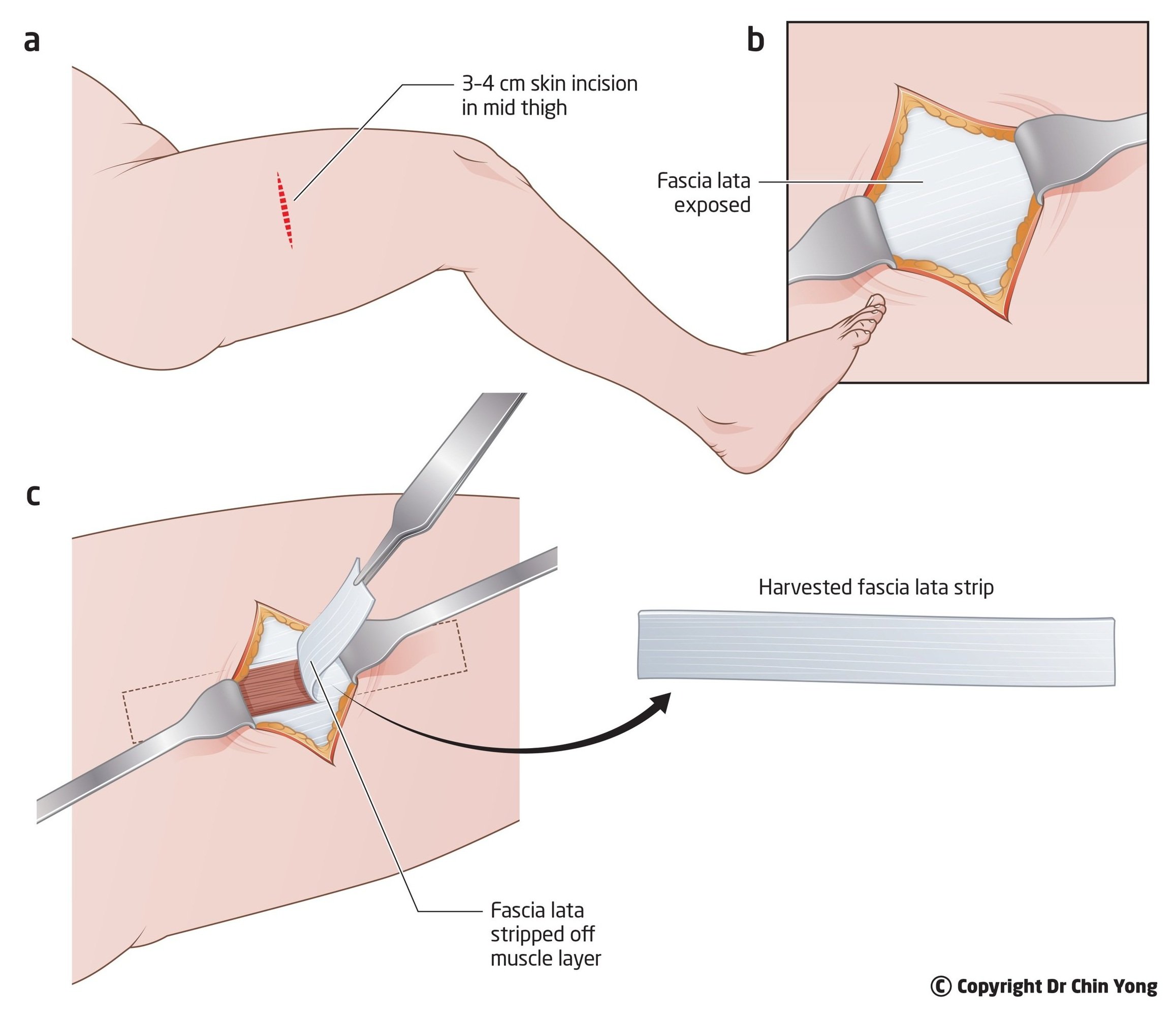Fascia Lata Surgery
What is fascia lata?
Fascia lata is a deep strong connective tissue of the thigh. This fascia can be harvested and utilised to reinforce weakened tissues during pelvic organ prolapse or stress incontinence surgery.
Fascia lata has also been utilised in variety of specialty surgeries including eye surgery, head and neck, abdominal wall reconstructions and limbs surgery.
There has been increasing interest and utilisation of autologous fascia lata use in pelvic floor reconstruction due to ongoing pelvic mesh controversies and litigations.
Dr Yong uses your own fascia lata (autologous) for pelvic floor reconstruction surgery
Who is suitable for fascia lata surgery?
Women who wish to avoid synthetic pelvic mesh use or are wanting mesh free surgery.
Advanced pelvic organ prolapse (Stage 3 or more)
Recurrent pelvic organ prolapse or stress urinary incontinence
What is involved in fascia lata surgery?
A small 3-4cm skin incision will be made on your mid-thigh (usually left thigh). The fascia lata graft of approximately 12cm x 4cm will be harvested through this single incision for prolapse surgery (smaller graft for stress incontinence surgery). After harvesting the graft, the skin will be closed with dissolvable sutures. A compression bandage will be used to support your thigh for 48 hours.
Fascia lata procedure
The fascia lata graft can be utilised for prolapse surgery (vaginal, laparoscopic or robotic approach) or stress incontinence surgery
What are the possible complications with fascia lata surgery?
Specific risks associated with fascia lata surgery include:
Bruising at fascia lata donor site ( very common - more than 1 in 10)
Haematoma/seroma formation (common - more than 1 in 100)
Paraesthesia/nerve pain (common - more than 1 in 100)
Surgical site infection (uncommon – more than 1 in 1000)
Donor site muscle herniation (uncommon – more than 1 in 1000)
Unappealing cosmesis (rare – more than 1 in 10,000)
What to expect after fascia lata surgery?
Apart from taking standard precautions following pelvic floor reconstruction surgery, additional care at the donor site is required.
You will be given compression pants before being discharged to provide extra support while mobilising and also minimising the risk of haematoma formation.
Avoid high impact or strenuous activities until further advice from Dr Yong, usually around 6 weeks.
You will be fitted with a surgical support device in the vagina to allow optimal tissue ingrowth into the graft and healing. This device will be sutured in place and will be removed 4 weeks later. Some patients may experience vaginal discharge from this device.

